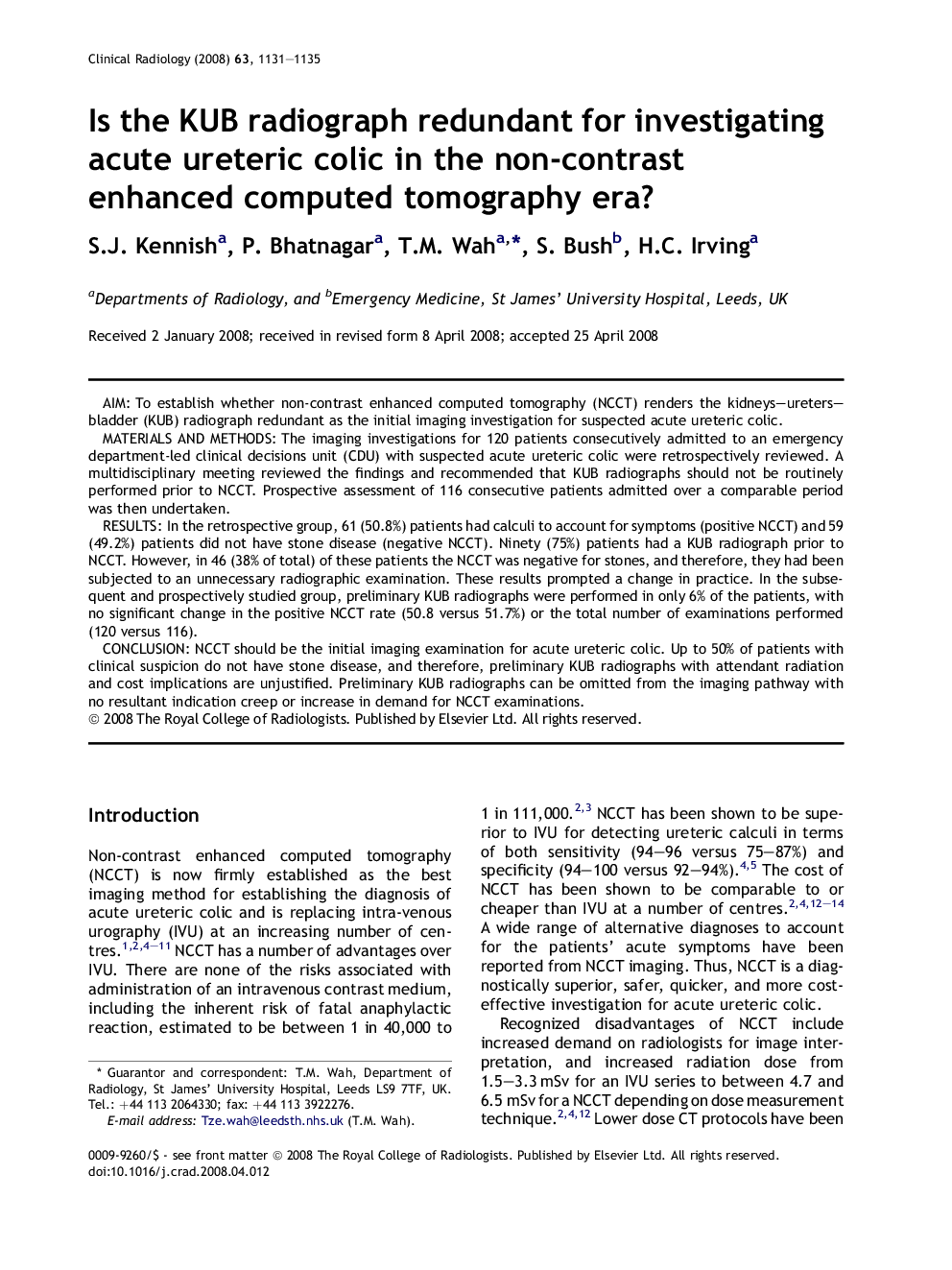| Article ID | Journal | Published Year | Pages | File Type |
|---|---|---|---|---|
| 3984271 | Clinical Radiology | 2008 | 5 Pages |
AimTo establish whether non-contrast enhanced computed tomography (NCCT) renders the kidneys–ureters–bladder (KUB) radiograph redundant as the initial imaging investigation for suspected acute ureteric colic.Materials and methodsThe imaging investigations for 120 patients consecutively admitted to an emergency department-led clinical decisions unit (CDU) with suspected acute ureteric colic were retrospectively reviewed. A multidisciplinary meeting reviewed the findings and recommended that KUB radiographs should not be routinely performed prior to NCCT. Prospective assessment of 116 consecutive patients admitted over a comparable period was then undertaken.ResultsIn the retrospective group, 61 (50.8%) patients had calculi to account for symptoms (positive NCCT) and 59 (49.2%) patients did not have stone disease (negative NCCT). Ninety (75%) patients had a KUB radiograph prior to NCCT. However, in 46 (38% of total) of these patients the NCCT was negative for stones, and therefore, they had been subjected to an unnecessary radiographic examination. These results prompted a change in practice. In the subsequent and prospectively studied group, preliminary KUB radiographs were performed in only 6% of the patients, with no significant change in the positive NCCT rate (50.8 versus 51.7%) or the total number of examinations performed (120 versus 116).ConclusionNCCT should be the initial imaging examination for acute ureteric colic. Up to 50% of patients with clinical suspicion do not have stone disease, and therefore, preliminary KUB radiographs with attendant radiation and cost implications are unjustified. Preliminary KUB radiographs can be omitted from the imaging pathway with no resultant indication creep or increase in demand for NCCT examinations.
